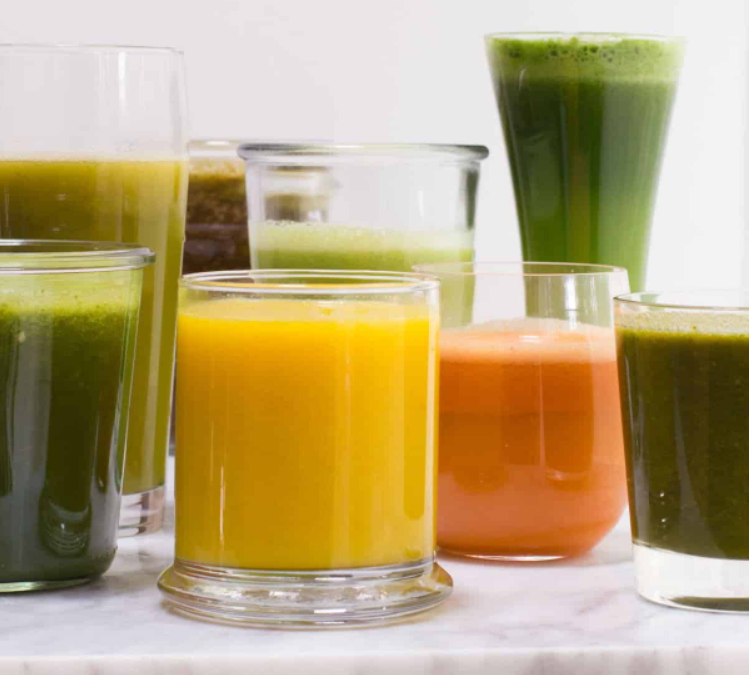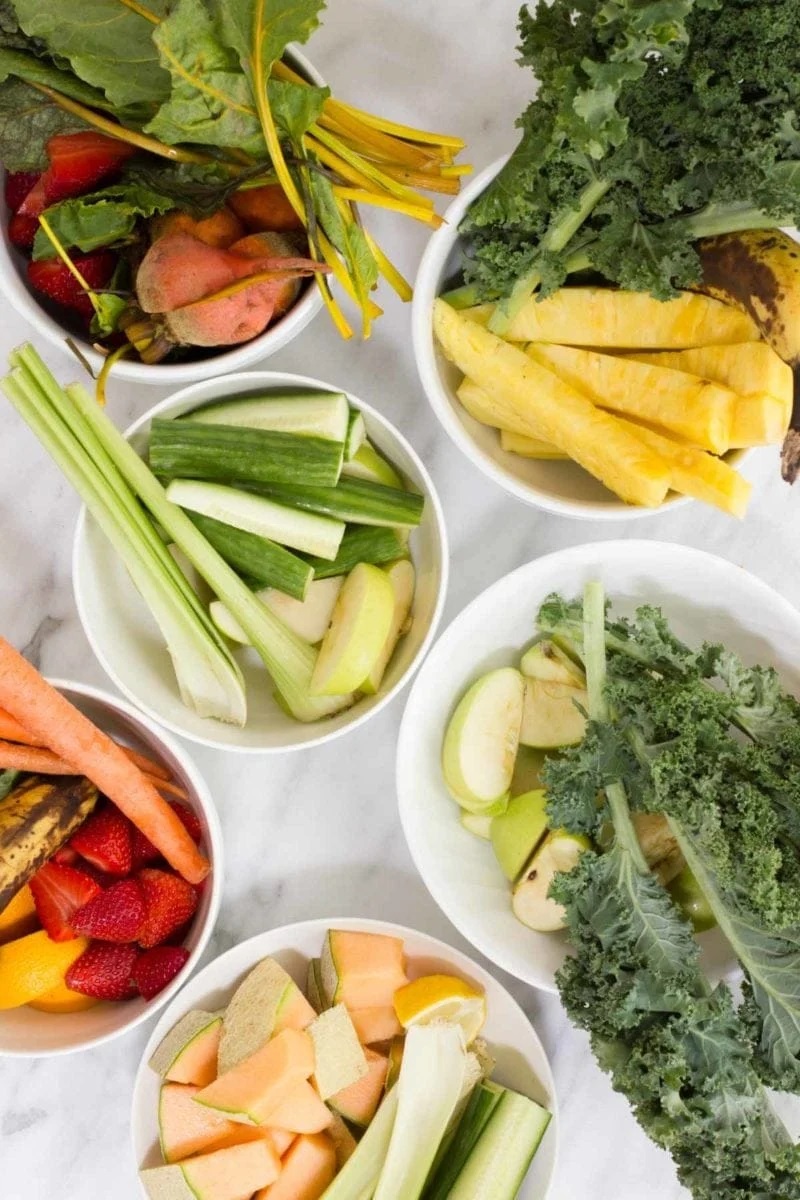Have you guys gotten into juicing yet? If you haven’t, you should try it! It’s a fun and tasty way to pack a ton of healthy nutrients into a drinkable treat that’ll make you feel great.
Now, a lot of folks out there think of juicing as a replacement for whole foods—I don’t agree with that. I believe that whole foods (and the fiber that comes along with them) are vital part of a healthy diet. I don’t recommend using fruit or vegetable juices (or smoothies) as a replacement for food.
Instead, I think adding all-natural, unsweetened fruit and vegetable juice to help supplement your diet is a great idea. It’s not better than whole foods, it’s just different. And sometimes, that’s all we need to help us keep up with a healthy diet.
As with everything, if it makes you and your family feel good, then do it. If it doesn’t? Skip it! For me personally, I see some real differences in the way I feel when I’m consistently juicing—I assume mostly because my overall consumption of fruits and veggies is up. My skin is brighter and clearer, and I tend to get sick less often. For me, juicing is a great way to kickstart healthy momentum.
What kind of juicer should I use?
If you’re just starting out with juicing, the first thing you’ll need is…well…a juicer! There are two main kinds of juicers out there—centrifugal (AKA: fast) and masticating (AKA: slow or cold-press) juicers.
The typical juicer you grab from the big box store is probably a centrifugal juicer. The disadvantages of these kind of juicers are pretty numerous—they aren’t very efficient at extracting juice, they don’t do well juicing leafy greens, they are loud as all get out, and some of these juicers get hot enough that they actually break down of the nutrients in the juice.
The advantage of these kind of juicers? They are very affordable—you can grab one for about $40. If you only want to juice occasionally and not for nutrition purposes (like say for cooking or baking), a centrifugal juicer will do you fine.
However, if you really want to get into juicing and get the most flavor and nutrients out of your fruits and veggies, a slow juicer is the way to go. The “slow” is a bit of a misnomer, because while slower than a centrifugal juicer, slow juicers are still very fast.
They are quiet, easy-to-clean, and really give you best quality juice. The drawback? They aren’t cheap. In fact, to get a good quality slow juicer (like the Hurom I have and recommend), you’re going to be spending upwards for $400. But if you plan on juicing regularly, it’ll be money well spent. And since my Hurom is so powerful, I can do a lot more than just juice in it—I regularly use it to make nut milks, smoothies (it comes with a separate strainer just for making smoothies), and to help me with canning. It’s an appliance that has earned a coveted spot on my kitchen counter!
What are some good starter juice recipes?
When I first started juicing, I felt really intimidated by all the crazy combos out there—I mean just in the grocery store alone, you see some bottles of juice with a million different ingredients. 2 1/2 strawberries here, 2/3 of a mango there, 27 blueberries. Who counts blueberries!?!
I thought I’d pull together eight of my favorite simple juice recipes to get you started. These juice recipes all use easy-to-find fruits and veggies, and most of the juices have less than three ingredients. They are all sweetened naturally with fruit, so you know they taste great! These are a great way to get your feet wet with juicing. Let’s get started!
If you’re looking to start adding green juice to your diet, this is a great place to start. Cucumbers and celery are both packed with water, making them excellent candidates for juicing. And green apple adds tons of sweetness and fruity flavor to the juice. This juice is super refreshing and hydrating—perfect for summer!
Like the spicy kick of ginger? Well then this recipe is for you. The sweetness of carrots and apples are a great balance to the heat of ginger.
Get your nutrients from dark, leafy greens all while drinking juice that tastes like the tropics! This is one of the juice recipes that is not recommended for centrifugal juicers, which will not be able to properly juice banana or kale leaves.
The earthiness of beets is balanced out by sweet and fruity berries in this brightly purple juice. If regular purple beets are a bit too strong of a flavor for your tastes, try golden beets, which are sweeter and more mild in flavor.
Feeling under the weather? Send a power boost to your immune system with the germ-fighting combo of lemon, orange, and ginger.
Bright and fruity, this juice shows off how awesome melons are in fruit and vegetable juices. For a fun, refreshing twist, add in a leaf or two of fresh mint.
Post time: May-07-2022



